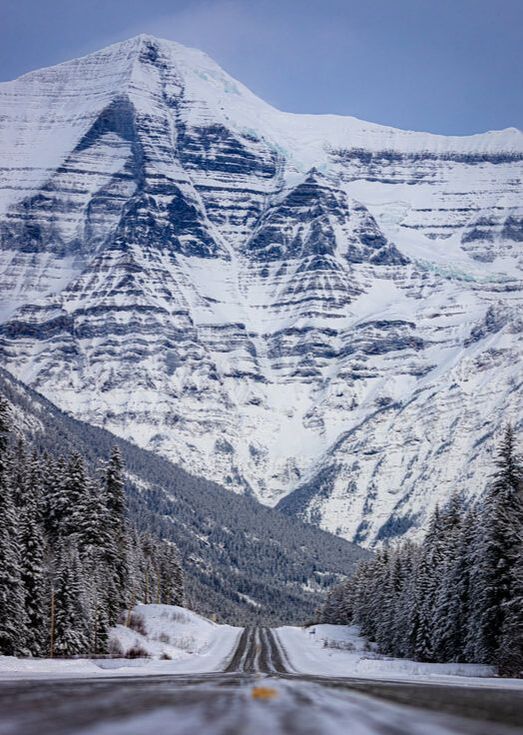 Landscape photographers often complain about having nothing to shoot. The light is too harsh. There's not enough light. The light is too flat. There's nothing interesting to shoot. What's really happening here is that they're either losing creativity, or they are pigeon-holing themselves into one style. Are you a light chaser or can you adapt to anything? I've fumbled with this many times. I still do. If it's mid day with a harsh summer sun beaming down, I want to leave my camera at home. On the other hand, if the light is super flat, I often find myself bored with the scene. But, that got me thinking, how can I change things up and adapt to the situation to produce interesting looking images? In reality, there is no bad light (within reason) and there is always something you can photograph. The only limiting factor is you. This image of Mount Robson is a good example. Camera resting on the road, shooting telephoto, foreground elements, overcast day. I started forcing myself to shoot when conditions aren't ideal. Here are some techniques I've learned and started teaching: 1. Put your camera on the ground. Not literally, but occasionally maybe. Placing your camera at the lowest possible angle will do two things. First, it will introduce foreground elements that were otherwise missing in your shot. Second, it will give your final image more of a sense of scale. Static camera positioning is boring. By getting low, you can have interesting looking subject matter at a macro level that counteracts your main subject matter. Sometimes, the foreground becomes the subject matter and the background is blurred out. Some of my favourite photos have been when I didn't expect a result. 2. Shoot at the extremes. My main two focal lengths live in the 16-24mm and 200-400mm neighbourhood. Rarely am I shooting in between that. I never understood why some landscape photographers only shoot wide. Why? You're losing out on such a different, space crushing perspective while shooting telephoto. In fact, my Canon EF 100-400mm lens is mounted to my camera 90% of the time. You'll gain so much more information within the frame that you couldn't get at a wide angle. Try it. 3. Use a neutral density filter. Slow that shutter down, freeze the water, blend moving objects into one ribbon of colour. Spin your camera on the tripod head, or zoom in with a slow shutter. Get artistic and defy realism. I've really adopted this technique recently, because it adds a surrealistic element to a normally static scene. 4. Use lighting. What? Landscapers bring artificial lighting to the outdoors? Yes. Don't be afraid to bring a flash or better yet, a portable studio strobe. Light falls off very quickly, especially outdoors, but this isn't necessarily a bad thing. If your scene is kind of boring, bring someone to model for you, pop a bit of fill flash on them, and incorporate the background landscape. What you will end up with is more separation of the subject matter with the background and hopefully, a more professional looking image. A landscape photographer who can successfully incorporate artificial lighting into their scenes has an extra advantage over those who don't (or can't). 5. Think differently. If the day is drab, overcast, flat, or you're in a dark forest, shoot the scene with the end result being a black and white photograph. Imagine the final product - are the whites white and the blacks black? Use the conditions to boost the mood of the image. Bump your ISO up and get grainy. Create drama by taking advantage of those drab conditions. Again, I forced myself to bring my camera along and what I've ended up with are some of my favourite images. It helps imagining what the edited scene will look like in the end. There you have it. What are your tips for shooting in less than ideal conditions? Leave a comment or email me.
0 Comments
Leave a Reply. |
Wayne Parsons
Documenting my experiences and travels through photography. Archives
June 2024
Categories |
 RSS Feed
RSS Feed